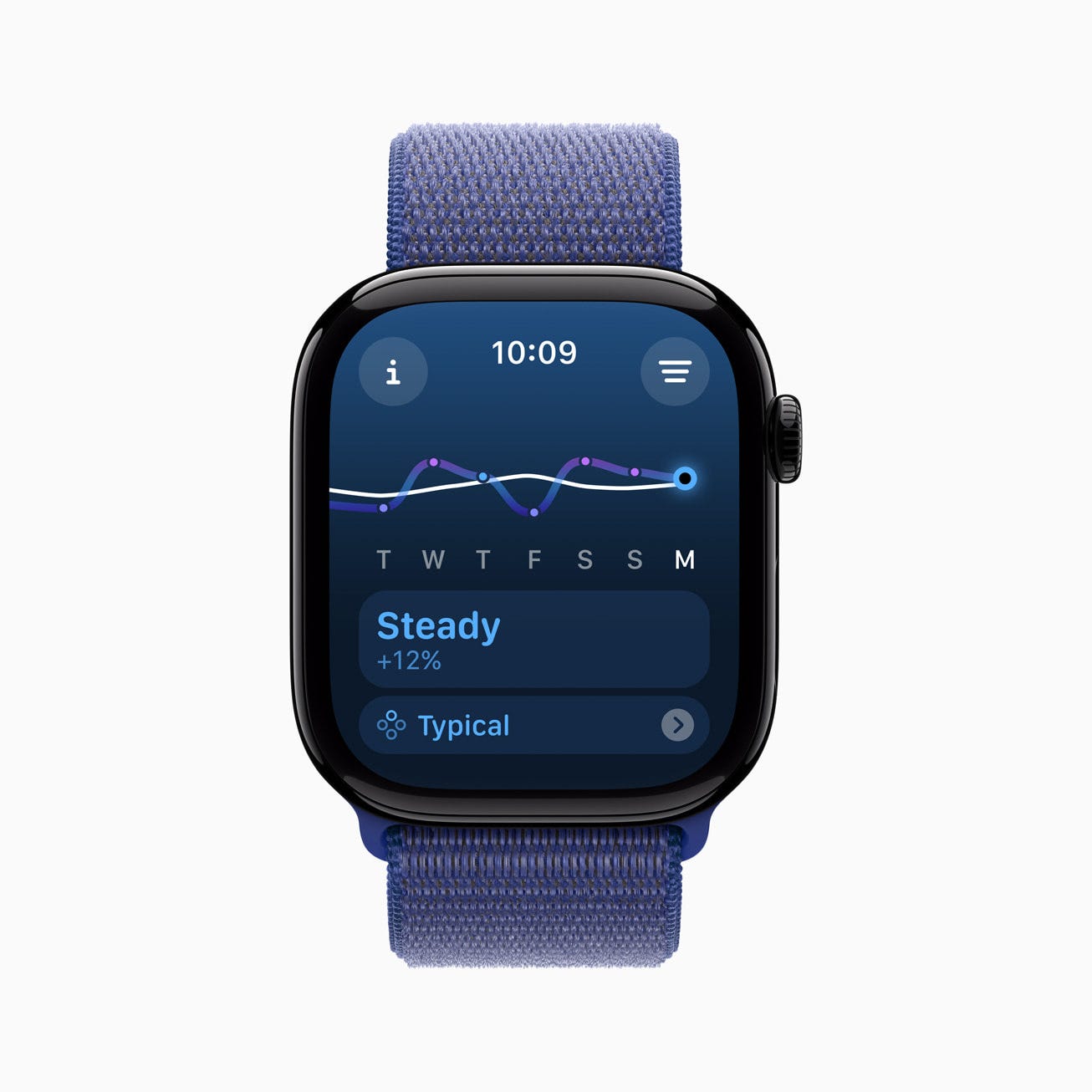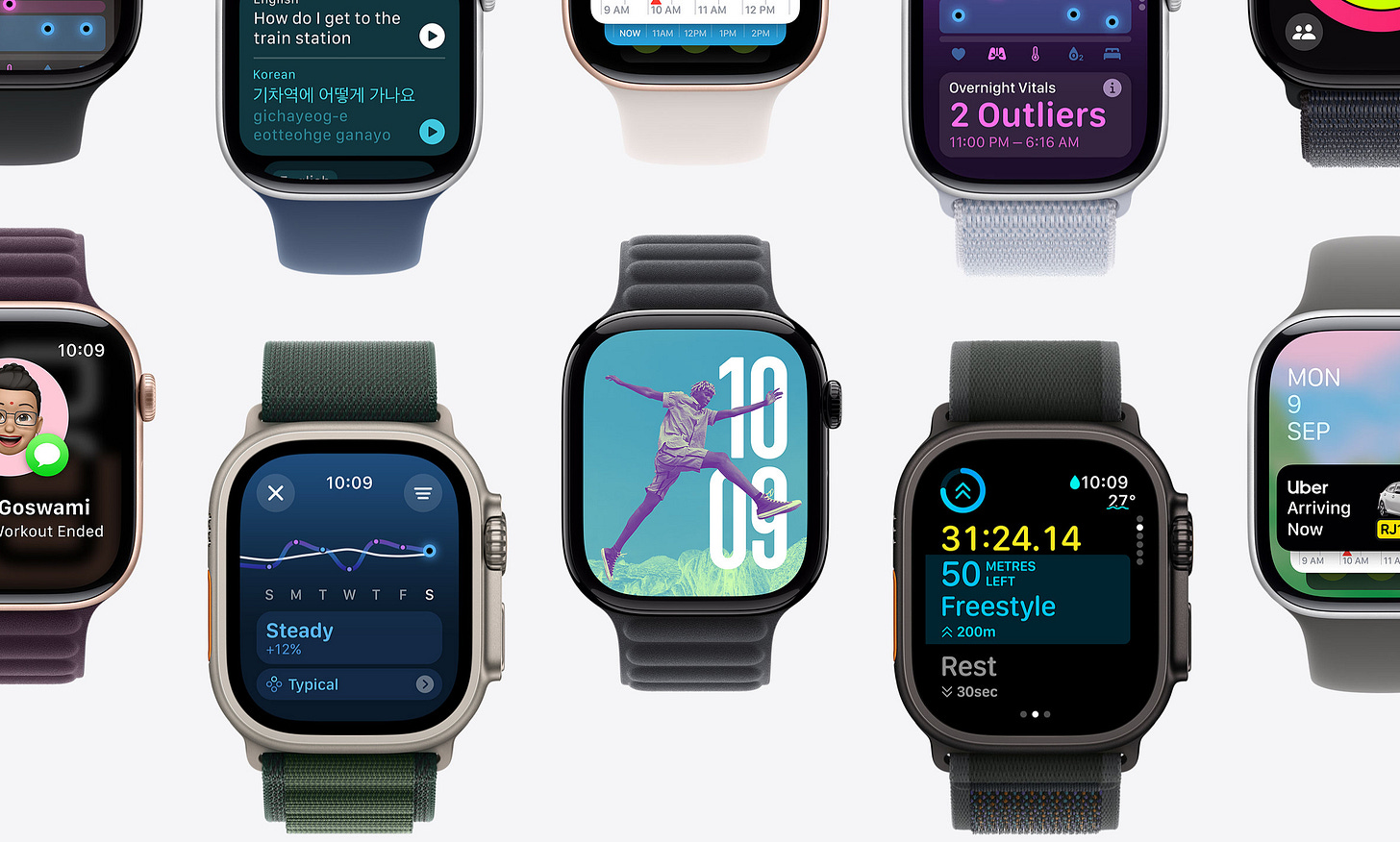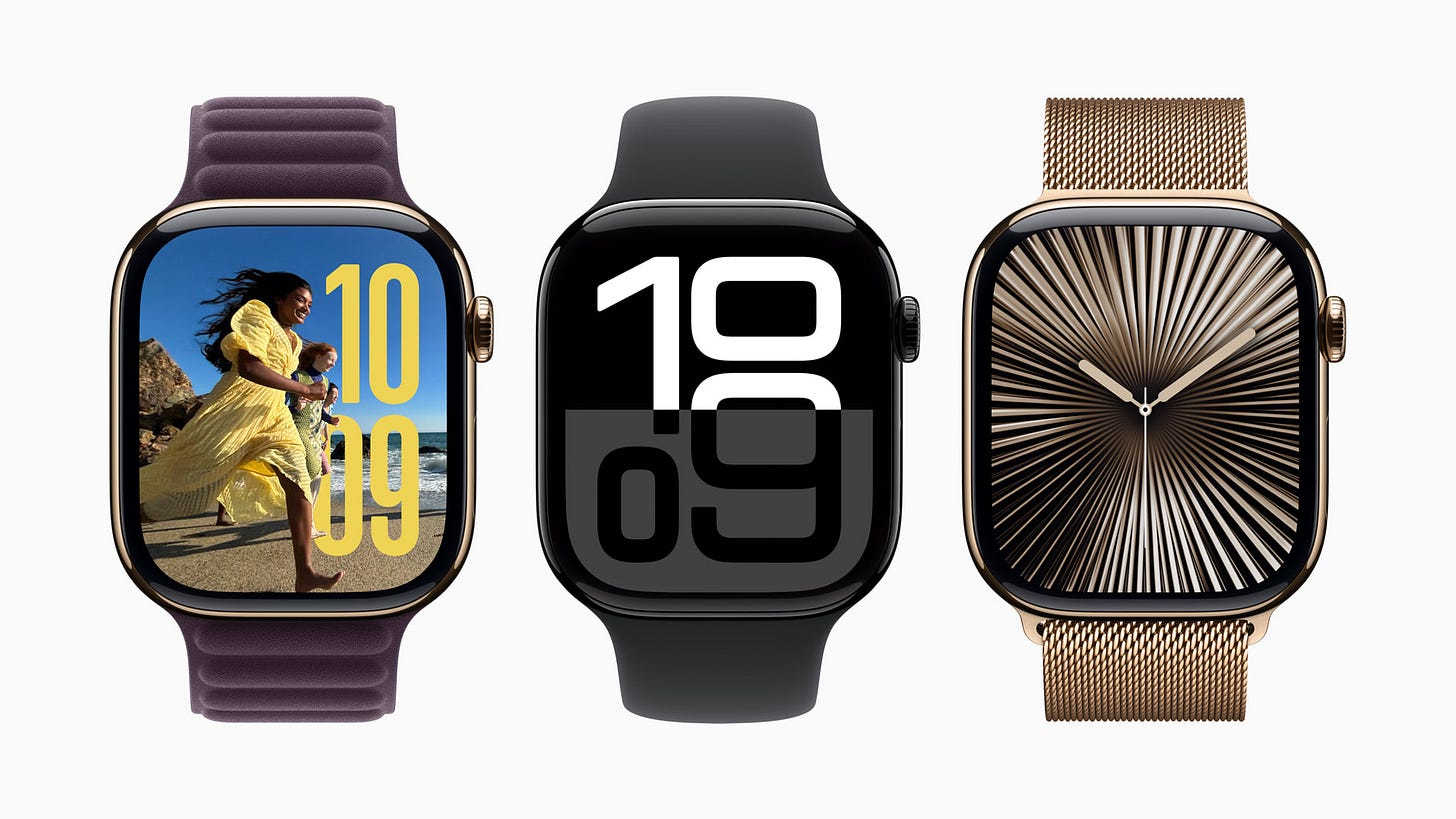watchOS 11: Truly Intelligent?
Maybe the real Apple Intelligence is all about saving your life
I find it astounding that a lot of people go around saying that Apple doesn’t innovate on the Apple Watch or do something dramatically different every year. MKBHD recently said the same thing in his review of the Apple Watch Series 10 and watching his video made me understand the root issue. “Something different” or a “new design” to MKBHD and others simply means the watch becoming a circle. But Apple has improved the Apple Watch in some truly remarkable ways in the last few years that anyone who thinks otherwise needs to rethink what they want from this product.
I would, in fact, argue that no other Apple product has seen as much love as the Apple Watch has seen in the last few years, in terms of innovation and change.
Let’s take a look.
In 2022, Apple introduced the Apple Watch Ultra, a dramatic new design, so unlike Apple, boxy, big and bulky. It was a spectacular success. People from all walks of life were buying the Watch for good reasons - they liked the larger displays, they liked the extended battery life, some thought it looked cool. I have never been a fan of that form factor, it just feels too bulky to me but I appreciate the huge change Apple did.
In 2023, just when we thought it would be a very quiet year for Apple Watch, Apple introduced watchOS 10, arguably the biggest ever redesign for the OS since its beginning. watchOS 10 required a lot of relearning and breaking of muscle memory because it changed some fundamental behaviours like accessing the Control Center. watchOS 10 was polarising. Some thought that it was gorgeous while some others thought it was the poorest design Apple had ever made. But no one could deny that it was a year of huge change.
So one big year for hardware and one big year for software. Surely, 2024 would be a quiet year, right? Right?
In 2024, depending on who you ask, Apple did absolutely nothing with the Apple Watch or Apple has changed everything about it. I fall into the second camp, because 2024 feels like the culmination of what Apple was trying to achieve in the last two years - finally falling into place, both in hardware and software.
With the brand new Apple Watch Series 10, Apple has strongly committed to its sleek design (I cannot emphasise how happy this makes me), made the Watch even thinner than it used to be and they have made the screen bigger. This is the best of both worlds - we now have a larger display like the Ultra but we also have the thin, sleek form factor that people love about the regular Apple Watches (What people? I am people).
When Apple introduced watchOS 11 in WWDC, I dismissed it as a quiet update. But using it over the last few days has made me realise that this is a sleeper hit. It’s very, very “intelligent”. And despite what people would say, it’s a year of big changes once again!
A stack that’s truly smart?
Last year, watchOS 10 added the “Smart Stack”, a series of widget-like cards that could be accessed by turning the Digital Crown. It was meant to be handy, to view important information at a glance and access items quickly.
It was nice, I used it to view my upcoming meetings and my todos from Things. But what was so “smart” about it, I have no idea. The Smart Stack never did anything smart. When watchOS 10 released, it had added a lot of misc items to the stack. I promptly removed everything and left only 3 items - my Fitness rings, my Things 3 card and calendar events. This list was mostly static through the year so there was nothing really smart about it. They should have simply called it “Stack”.
But this year, the Smart Stack has finally started living up to its name. It’s smart, intelligent and I absolutely love the context aware cards that I am starting to see everyday.
For example, I woke up this morning and saw the Weather card in my stack. I was initially annoyed and I thought that it was just a default widget from watchOS 11’s stack. An hour or so later, to my very pleasant surprise, it was replaced with a Fitness widget. Around mid-day, the stack showed me a Mindfulness widget, asking me to log my mood for the day. I realised this would be a great way for me to consistently log my mood because I have tried before with notifications and complications and my intent has always been low.
I really like that the Smart Stack is finally smart and I can’t wait to see better third party cards in my stack. But the best addition to the stack has been Live Activities from iOS. Even if there isn’t a dedicated watchOS app (which is the case for most apps), the live activity from your phone syncs to your watch and you are able to keep track of Swiggy deliveries, your Uber arrival etc. This is something I have been wanting ever since Live Activities debuted on iOS and it’s so good to finally see it implemented and might I add, quite flawlessly.
Fitness - Time for some rest

Apple’s approach to the Fitness and Health app has always been conservative. While Oura, Whoop and Ultrahuman have always taken a gallant attempt at ranking and scoring your sleep and activity through the day, Apple shied away from the ranking and scoring, just giving you plain numbers wherever it could. This is with good reason. The Apple Watch user base is much larger and scoring users could quickly get very challenging. Gamifying any platform has its perks but also has terrible downsides. You run the risk of getting people obsessed over metrics so much that they might end up damaging their lives. “Why am I scored like this? I need to work out more and more” Or “I deserved a better score, I feel so dejected seeing my health metrics” could become common phrases if Apple starts scoring people based on absolute numbers. Apple recognises it has a responsibility and health scoring is a very subjective metric not many would agree with.
Having said that, it was always surprising to me that Apple never recognised the need for rest. Fitness Rings were always an objective, static measure. You had to do X number of calories everyday - no matter if you are stressed, sick, active or busy. Given that these rings were directly associated with streaks and badges, Apple ran the risk of users getting obsessed the same way they would with a scoring system.
After years of legitimate complaints, Reddit threads, comments and feedback, Apple has finally implemented a “Training Load” feature. This helps users feedback into their workout regime with a metric on how intensive they felt their workout was and using this and a bunch of other metrics, watchOS tries to categorise whether or not you need rest. To complement this, the Fitness app also lets you pause rings, for the days you think you deserve rest, without breaking any streak that you might want to build.
It’s too early to determine if this implementation works well. As millions of users start using these features and pour into Reddit forums, we will know if Apple’s conservative approach to fitness is working well amongst the masses. But you can’t deny that this is a step in the right direction and once again, a huge change for watchOS.
Yeah, yeah, I hear you, Garmin had this forever blah blah. Nope, I don’t care.
Health - More utility for everyone
Tim Cook has repeatedly said that when viewing Apple from a zoomed out lens, he wants people to remember Apple for its contributions to health and fitness. To solidify its positioning here, watchOS 11 adds three new features - the new Vitals app, Sleep Apnea notifications and new Pregnancy features.
The new Vitals app seems great at first glance. It seems to be creating a baseline on what your general, everyday metrics should be for heart rate, respiratory rate, temperature etc. and measures it over time to identify any anomalies. The Health app has always been pretty good at identifying trends and pointing out anomalies. I have used this extensively to identify different lifestyle changes and its impact on my health and I am sure this is going to be a very useful addition to this toolbox.
Sleep Apnea notifications is the first FDA approved feature Apple has added since the introduction of ECG on Series 4 (Blood Oxygen was never FDA approved). Unfortunately, Sleep Apnea detection is available only on the newer Watches so I wouldn’t be able to test it.
Finally, watchOS also adds a feature where users can log pregnancy and understand their physical and mental health during this period.
A recurring theme with the Health app has been identifying lifestyle changes and monitoring trends. I think this is a very powerful way to look at Health. I was able to identify an anomaly in my health last year using the trends in the Health app and rectify my lifestyle so that I got into the right path. I am sure millions of other users have benefitted the same way.
Watch Faces
Finally, as is the drill every year, Apple has added 3 new watch faces (kinda!).
The first is actually a refreshed Photos face which now “intelligently” picks the right photos and displays it on the Watch so that it looks aesthetic. I haven’t tested this out yet, but if the iOS Lock Screen suggestions are any indication, I am sure this is going to look great.
The other two faces are the Flux and the Reflections face. Both have fancy new frills if you get the new Series 10 (they update every second gracefully even if you are on always-on mode) but also look great on the older watches. I love the Reflections face with the gradient colours and it’s my current favourite Watch face.
What is Intelligence anyway?
Considering how important Apple Intelligence is to Apple’s marketing this year and knowing how much Tim Cook cares about the Apple Watch, it is a little surprising that Apple Intelligence does not really make an appearance in any form on the Apple Watch.
But when you think about it broadly, what indicates the usefulness of Computational Intelligence (or AI or ML or whatever new buzz word you wanna call it)? Sure, the iPhone is getting the flashy new Intelligence features - creating your own random emoji, writing tools and notification summaries but one can argue that at some level, these are only useful to a small subset of users.
With the new Smart Stack and the new Photos watch face, Apple is already doing some level of computational intelligence without labelling it as Apple Intelligence. But more importantly, with Sleep Apnea, Vitals and Training Load, Apple is applying computational intelligence for the actual betterment of humankind. Isn’t that what technology is all about? Isn’t this what we have all been clamouring for? Instead of using AI to generate fake art, copy someone’s work or generating weird looking emojis, we want AI to take the human race forward. Using AI to augment health and fitness is a step in the right direction. From that perspective, honestly, watchOS 11 is perhaps the most intelligent OS Apple has shipped this fall!




